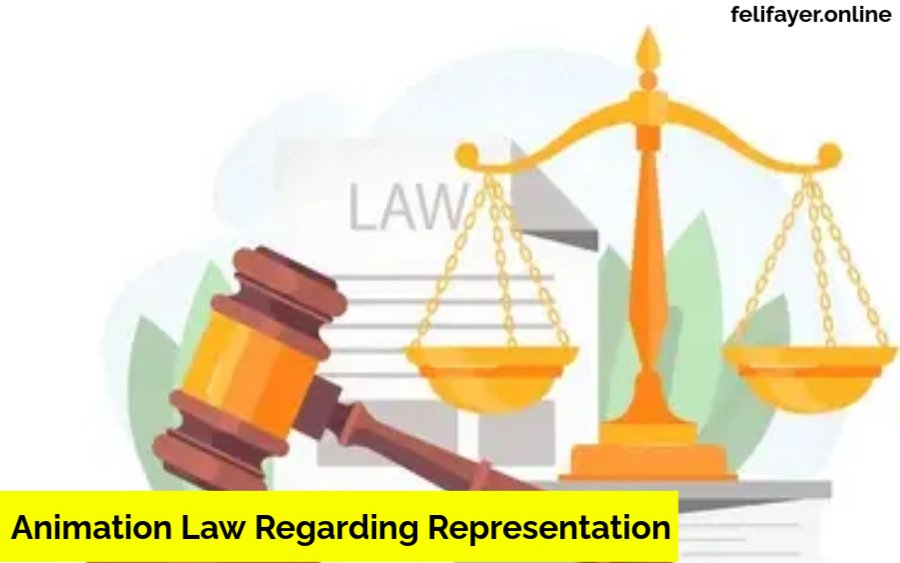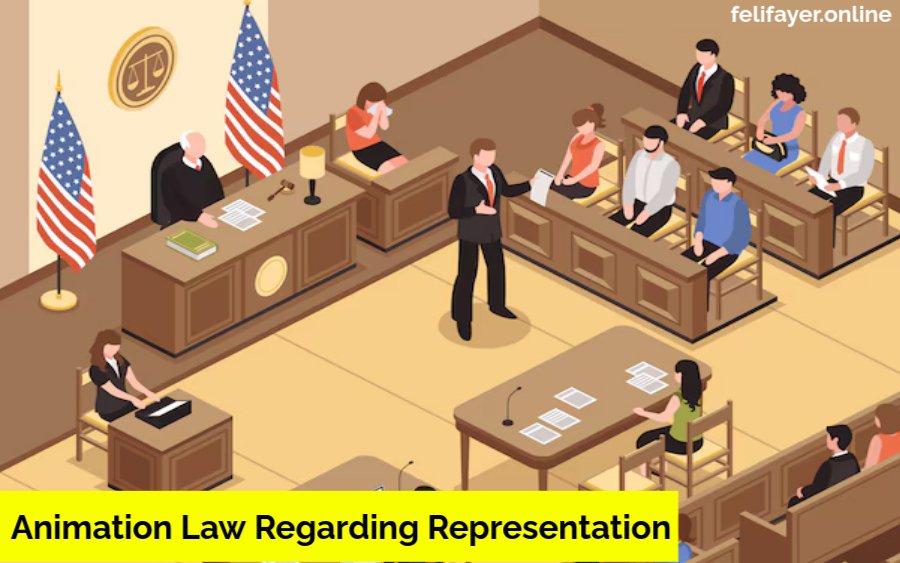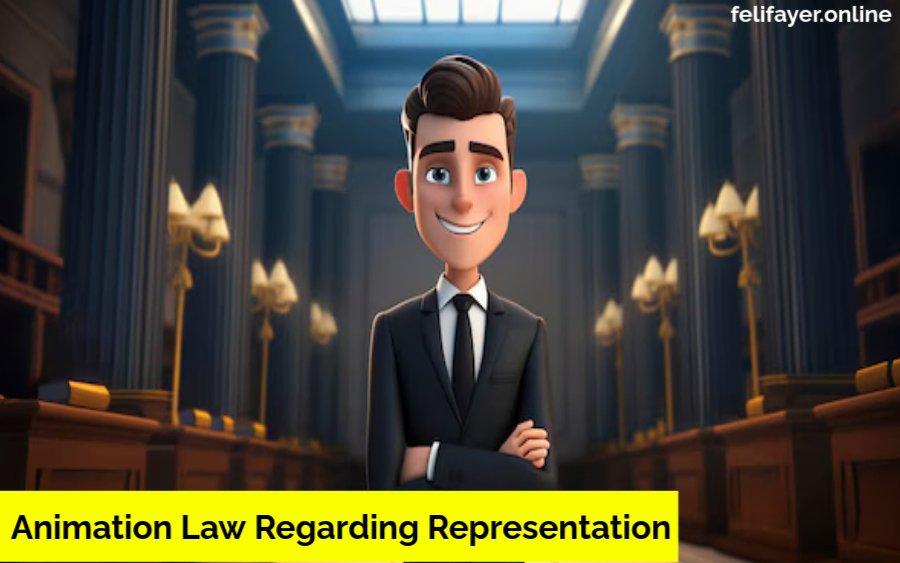Animation Law Regarding Representation: Navigating the Legal Landscape In 2024
Table of Contents
The world of animation is a fascinating blend of creativity, storytelling, and complex legal frameworks.
As the animation industry continues to grow and evolve, understanding animation law regarding representation becomes increasingly crucial for animators, studios, and agents alike.
This article delves deep into the various aspects of this topic, providing insights into the legal intricacies that can impact your work and career in animation.

The Evolution of Animation Law Regarding Representation
Animation has undergone a remarkable transformation over the decades. From hand-drawn techniques to cutting-edge computer-generated imagery, the industry has seen significant advancements.
With these changes come new legal challenges and considerations. As animation becomes more prevalent in film, television, and digital media, the need for clear legal guidelines regarding representation grows.
Historically, animators often operated in a gray area when it came to rights and representation. Many worked under informal agreements or verbal contracts, leaving them vulnerable to exploitation.
However, as the industry has matured, so have the laws surrounding it. Today, animators must be aware of their intellectual property rights, contractual obligations, and the role of agents in their careers.
The Impact of Technology on Animation Law Regarding Representation
The rise of technology has not only changed how animations are created but has also influenced the legal landscape.
Digital tools have democratized animation, allowing independent creators to produce high-quality content without the backing of major studios.
This shift has led to an increase in disputes over ownership and rights.For instance, with the advent of online platforms like YouTube and TikTok, many animators share their work with global audiences.
While this exposure can lead to opportunities, it also raises questions about copyright infringement and content ownership.
Understanding how to protect your work in this digital age is essential for any animator looking to thrive.
Understanding Representation in Animation
Representation in animation encompasses the dynamics between animators, their agents, and production studios. These relationships are essential for ensuring fair treatment and safeguarding the creative rights of animators.
The Role of Agents
Agents are crucial in shaping an animator’s career path. They serve as intermediaries who negotiate contracts and advocate for the interests of animators, helping them navigate the often-complex landscape of the animation industry.
This relationship is governed by specific laws designed to protect animators from exploitation. When entering agreements with studios or agents, animators must be aware of their rights and responsibilities.
Clear communication is vital, as misunderstandings can lead to disputes over ownership and compensation.
Key Legal Considerations
Intellectual Property Rights
Central to animation law regarding representation is the protection of intellectual property (IP). This includes:
- Copyrights for original works
- Trademarks for branding elements
- Patents for innovative techniques
Understanding these protections is essential for animators to safeguard their creations.
Contracts and Agreements
Contracts define the terms of engagement between animators and studios. Key elements that should be included are:
- Compensation
- Deliverables
- Timelines
- IP ownership
- Confidentiality clauses
A thorough understanding of these terms can help prevent potential disputes down the line.
Negotiation Tactics
When negotiating contracts with agents or studios, animators should be ready to advocate for themselves.
Familiarity with industry standards regarding compensation can significantly enhance your negotiating position.
Dispute Resolution
In the event of disagreements related to contracts or representation issues, having a clearly defined dispute resolution process within your agreements can save both time and resources.
This proactive approach helps maintain professional relationships and ensures that issues are resolved efficiently.
By comprehending these aspects of representation in animation, animators can better protect their creative works and navigate their careers with confidence.
The Role of Agents in Animation Law Regarding Representation
Agents are essential players in the animation industry landscape. They serve as advocates for animators, helping them secure jobs while negotiating favorable terms on their behalf. However, this relationship is not without its complexities.
Agent Representation Laws
- Licensing Requirements: In many jurisdictions, agents must be licensed to operate legally. For example, California requires talent agents to obtain a license from the state Labor Commissioner before representing clients in entertainment fields.
- Commission Limits: Laws may cap the percentage agents can charge as commissions—typically around 10%—ensuring that animators are not overcharged or exploited financially.
- Fiduciary Duties: Agents have fiduciary duties toward their clients; they are obligated to act in their clients’ best interests at all times. This means maintaining transparency about fees and potential conflicts of interest.
Understanding these laws can empower animators to choose agents who will advocate effectively on their behalf while ensuring compliance with legal standards.

Choosing the Right Agent
Selecting an agent is a critical decision that can significantly impact an animator’s career trajectory. When looking for representation:
- Research Potential Agents: Investigate their track record within the industry; look for agents who have successfully represented other animators or worked with reputable studios.
- Assess Their Communication Style: Open communication is vital; ensure that your agent listens to your needs and concerns while providing honest feedback about your work.
- Understand Their Fee Structure: Be clear about how much they will charge you as commission; ensure that you feel comfortable with their fee structure before signing any agreements.
International Challenges in Animation Law Regarding Representation
The animation industry is inherently global; collaborations often span multiple countries due to technological advancements and digital platforms that allow creators from different regions to work together seamlessly.
This international scope introduces challenges due to varying laws and regulations across borders.
Differing IP Laws
While treaties like the Berne Convention ensure mutual recognition of copyrights among member countries, enforcement mechanisms can differ significantly from one jurisdiction to another. For instance:
- Some countries grant creators moral rights over their work that cannot be waived or transferred.
- Others may have stricter regulations regarding copyright duration or fair use exceptions that could impact how animated works are shared internationally.
Cross-Border Contracts
When working internationally, contracts should specify which country’s laws govern the agreement to avoid legal ambiguities. Jurisdiction issues can complicate disputes when parties are located in different countries:
- Choice of Law Clauses: Including a choice of law clause in your contract helps clarify which jurisdiction’s laws will apply if disputes arise.
- Enforcement Challenges: Even if you win a case in one jurisdiction, enforcing that judgment in another country can be complicated due to differing legal systems.
Navigating these international challenges requires careful consideration and often specialized legal counsel familiar with both domestic and international laws affecting animation.
Real-World Examples
To illustrate these concepts further, let’s look at some real-world cases that highlight key issues related to Animation Law Regarding Representation regarding representation:
Studio Ghibli’s Licensing Challenges
Japanese animation studio Studio Ghibli faced significant hurdles when distributing its films internationally due to differences in censorship laws and distribution rights across various countries.
Negotiations required careful attention not only to Japanese laws but also those governing importing countries like the United States or European nations where cultural sensitivities might differ greatly from Japan’s standards.
This case underscores how vital it is for studios operating globally to understand local regulations while negotiating distribution agreements that respect both creative intentions and legal requirements—ensuring successful international releases without infringing on local laws or cultural norms.
Netflix’s Global Expansion
As Netflix expands its animation offerings worldwide—from original series like “Castlevania” to family-friendly films—it must navigate various legal landscapes governing content production across different territories:
- Content Licensing Agreements: Netflix negotiates licensing agreements with creators while ensuring compliance with local laws regarding content appropriateness.
- Intellectual Property Rights Management: Protecting IP rights becomes increasingly complex as Netflix collaborates with international creators who may have differing understandings of copyright protections based on their home countries’ regulations.
This case illustrates how major platforms must balance creative freedom with legal compliance—a challenge faced by many independent animators seeking opportunities within global networks like Netflix.

Best Practices for Navigating Animation Law Regarding Representation
Navigating the complexities of animation law regarding representation requires diligence and informed decision-making:
- Conduct Thorough Research: Before entering any agreements—whether with agents or studios—animators should research applicable laws and industry standards thoroughly.
- Engage Specialized Legal Counsel: Lawyers specializing in entertainment or animation law can provide invaluable guidance tailored specifically for your needs.
- Regularly Update Knowledge: Laws change frequently; staying informed ensures ongoing compliance while protecting your rights as an animator.
- Foster Transparent Relationships: Open communication between animators and agents helps prevent misunderstandings; establishing trust fosters healthier partnerships throughout your career journey.
- Document Everything: Keep records of all communications related to contracts or negotiations; having documentation can prove invaluable if disputes arise later on down the line.
Frequently Asked Questions
What is the difference between a work-for-hire agreement and a licensing agreement?
A work-for-hire agreement means that the studio owns all intellectual property created by an animator during employment; conversely, a licensing agreement allows an animator to retain ownership while granting usage rights under specified conditions.
How do international laws affect my animation work?
International laws impact intellectual property protection (IP) as well as contractual obligations; understanding local regulations where your work will be distributed is essential for avoiding potential legal pitfalls abroad.
Can I trademark a character I’ve created?
Yes! If your character serves as a brand identifier—meaning it distinguishes goods/services from others—you may apply for trademark protection through appropriate channels such as national patent offices or regional organizations like EUIPO (European Union Intellectual Property Office).
What should I look for in an agent?
Ensure that your agent is licensed (if required), has a good reputation within industry circles (check references), understands your goals (both creatively & financially), adheres strictly fiduciary duties (transparency), communicates effectively throughout negotiations (no hidden agendas).
How can I protect my work from being used without permission?
Registering your works with appropriate authorities (like copyright offices) provides formal recognition; additionally monitoring online platforms regularly helps identify unauthorized use early on—consider using watermarks/digital rights management (DRM) technologies too!
What are moral rights?
Moral rights allow creators certain protections over their works beyond mere economic interests; these include attribution rights (credit) & integrity rights (preventing derogatory treatment).
How important are contracts in animation?
Contracts are crucial because they outline expectations between parties involved; clear contracts reduce risks associated with misunderstandings/disputes down the line—always read them carefully before signing!
What happens if my agent breaches their fiduciary duty?
If an agent breaches fiduciary duty owed towards you as client—you may have grounds for legal action against them seeking damages incurred due directly resulting from actions taken without consent/knowledge!
Are there specific laws governing animated content aimed at children?
Yes! Many jurisdictions have specific regulations concerning content targeting children ensuring safety/appropriateness—familiarize yourself with these rules when creating material intended primarily for young audiences!
What role does technology play in modern animation law?
Technology influences how animations are created/shared globally; it raises new questions surrounding copyright infringement/distribution rights requiring ongoing adaptation by both creators/studios alike!
Conclusion: Embracing Legal Knowledge
In conclusion, understanding animation law regarding representation is essential for anyone involved in this vibrant industry—from independent creators navigating contracts alone all way up major studios producing blockbuster films!
As technology continues evolving reshaping how animations are created/consumed—staying informed about legal considerations empowers animators protect creations effectively while navigating complex relationships with agents/studios alike!
By embracing this knowledge—not only do you safeguard your work—but you also contribute positively towards an industry thriving creativity/innovation!
So whether you’re just starting out or already established—take time invest learning more about these important aspects surrounding animation law today!
Suggestions: If this topic caught your interest, you’ll definitely want to check out Divorcing a Gambler in Arizona law

Post Comment